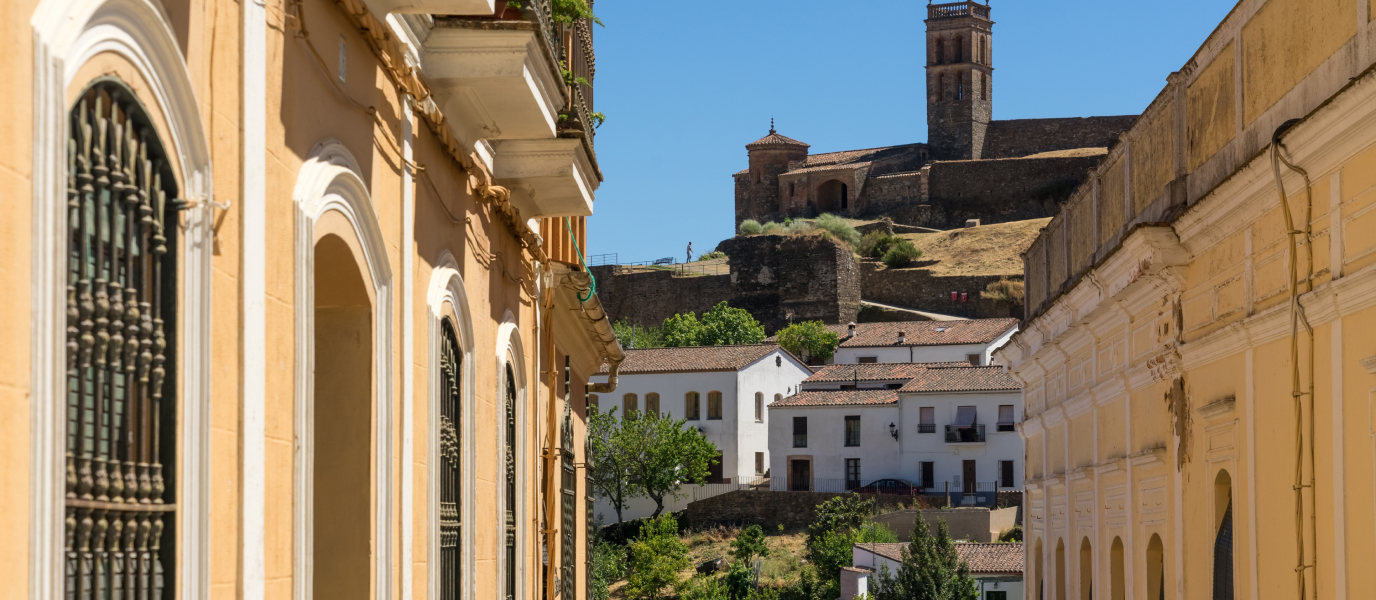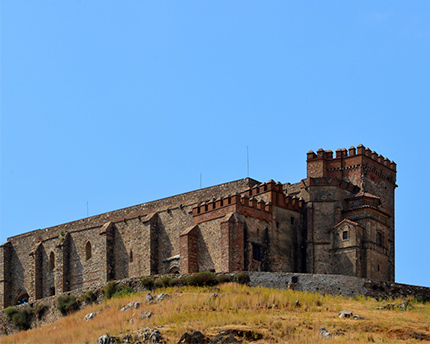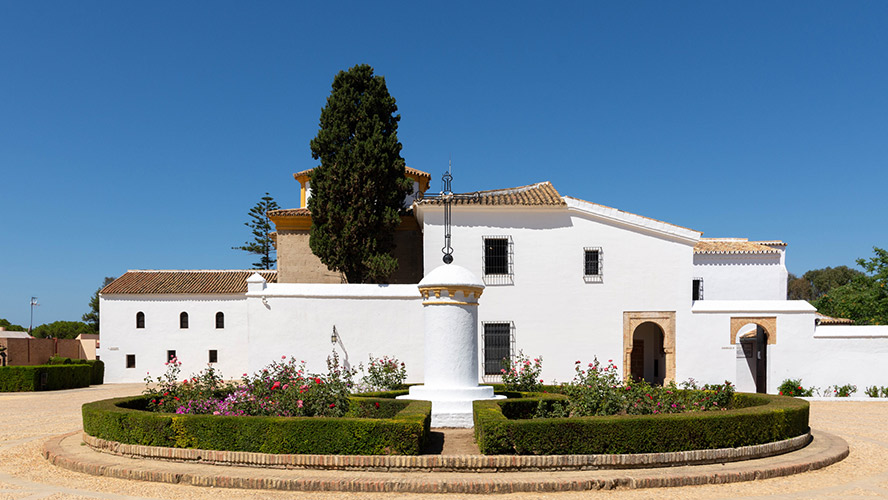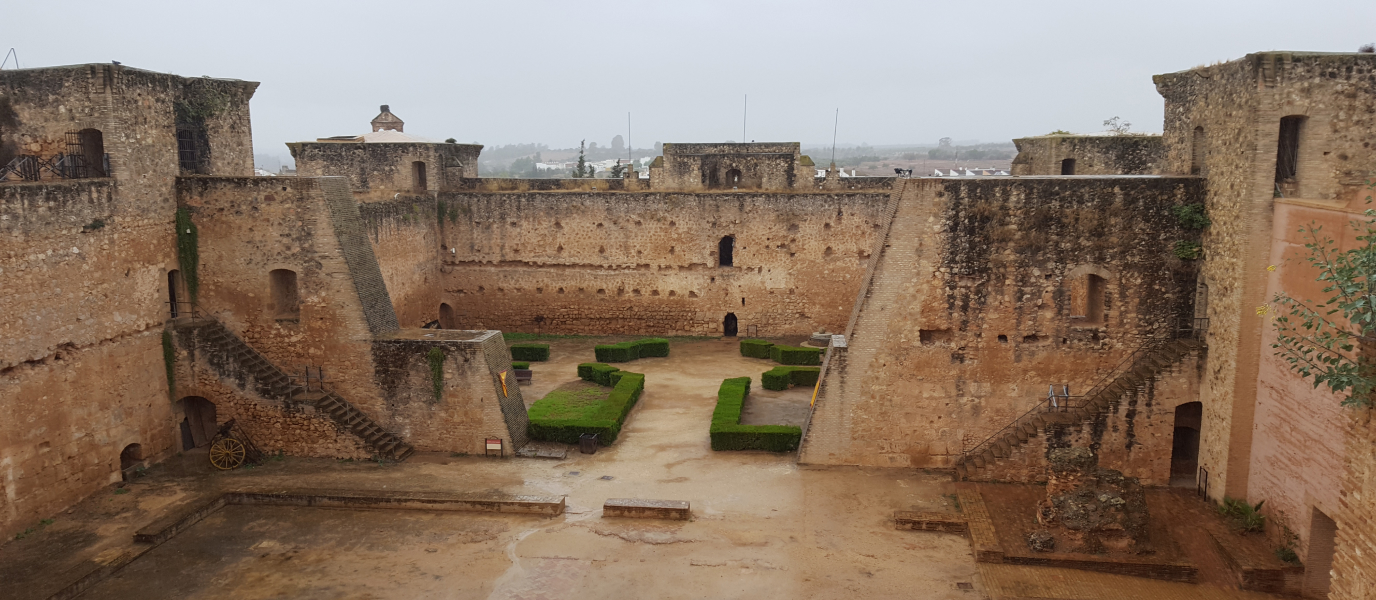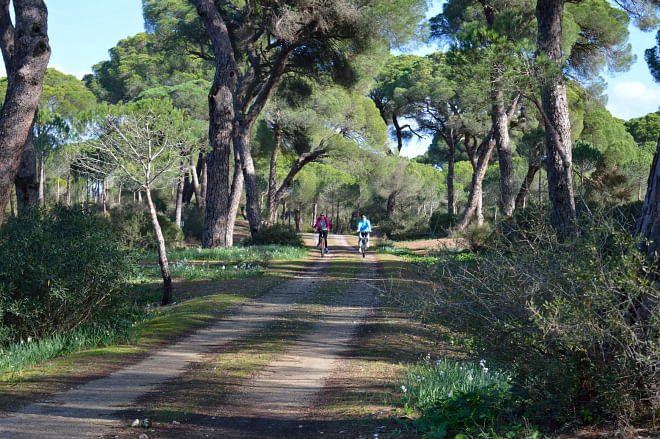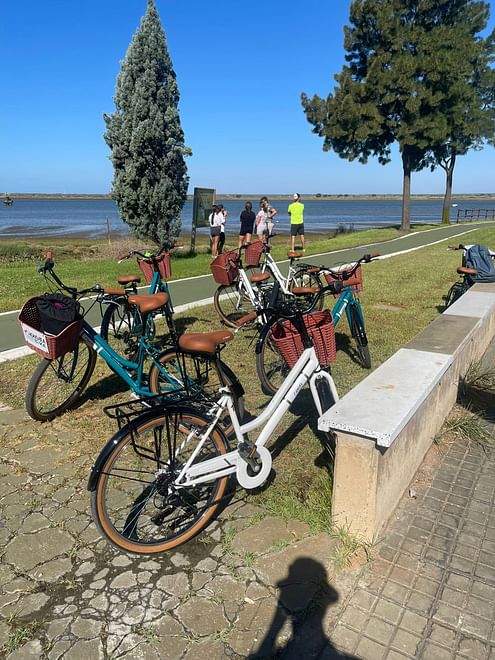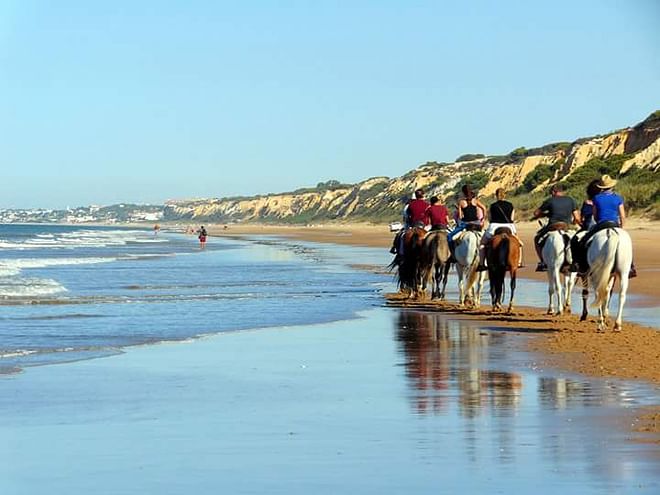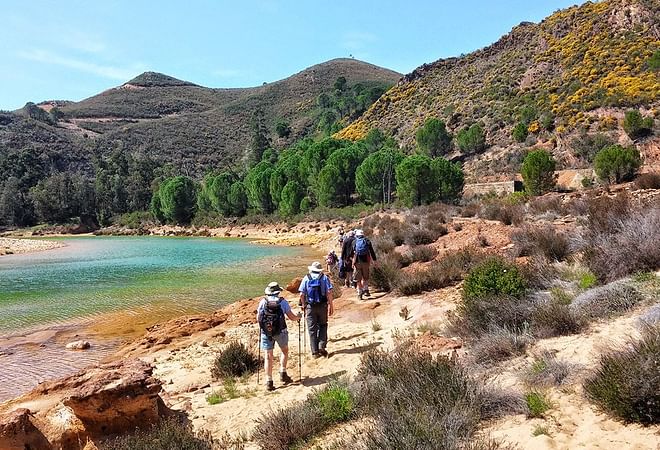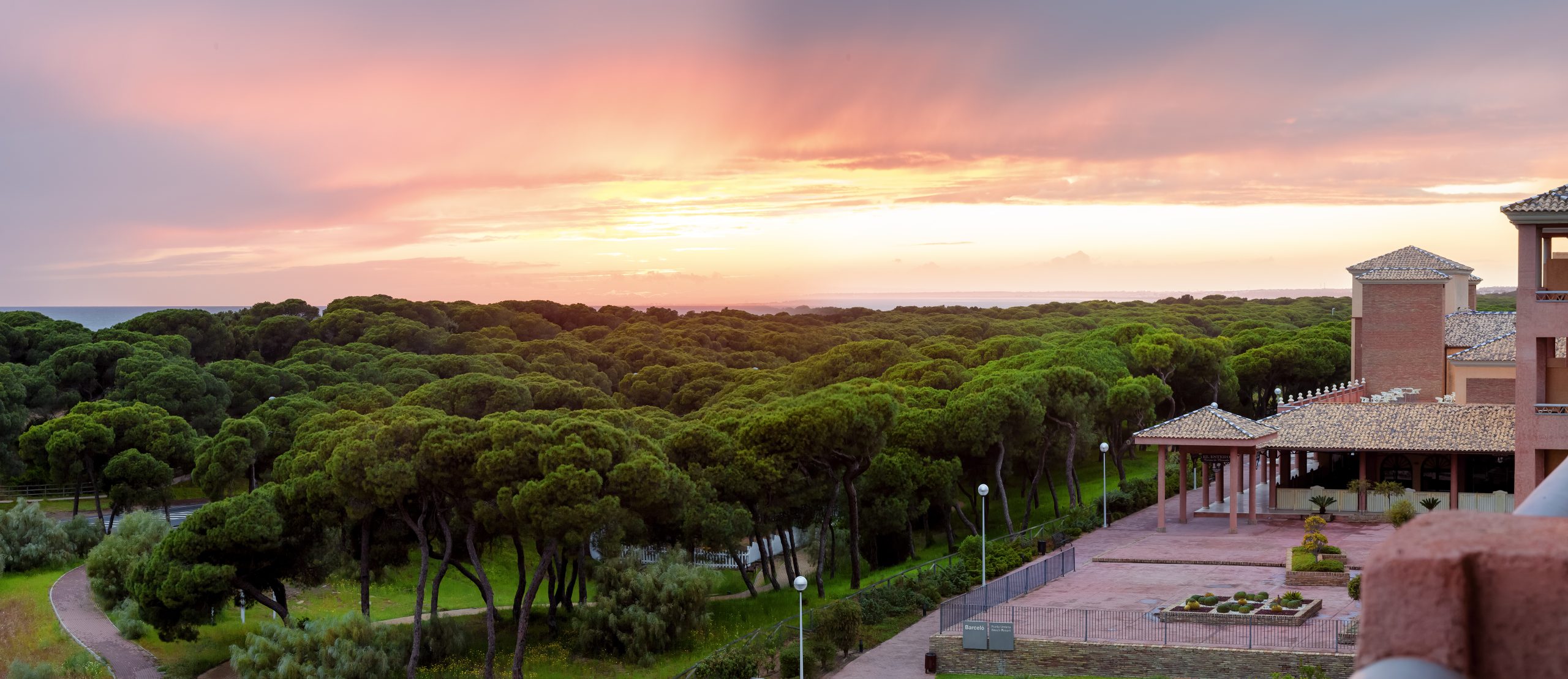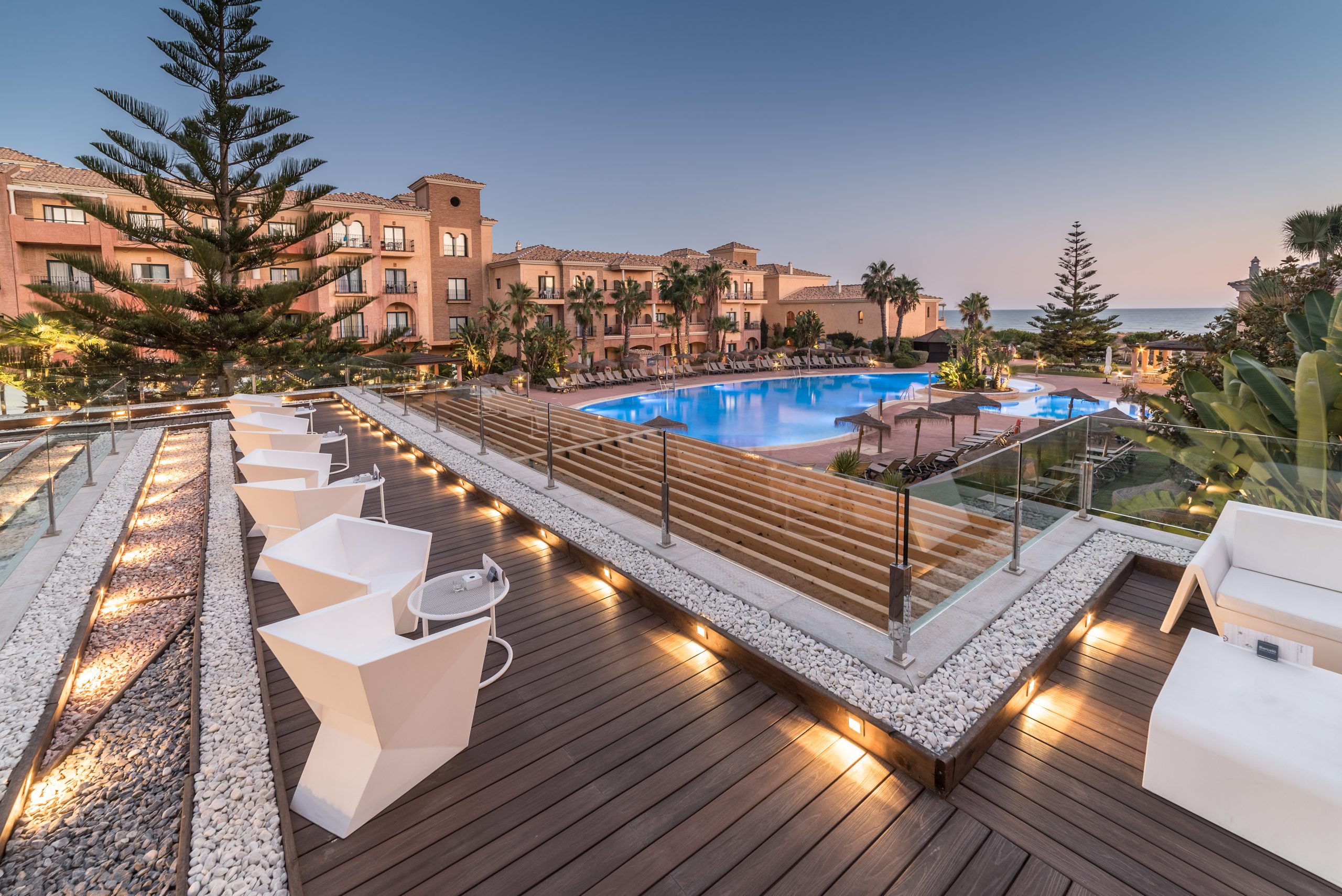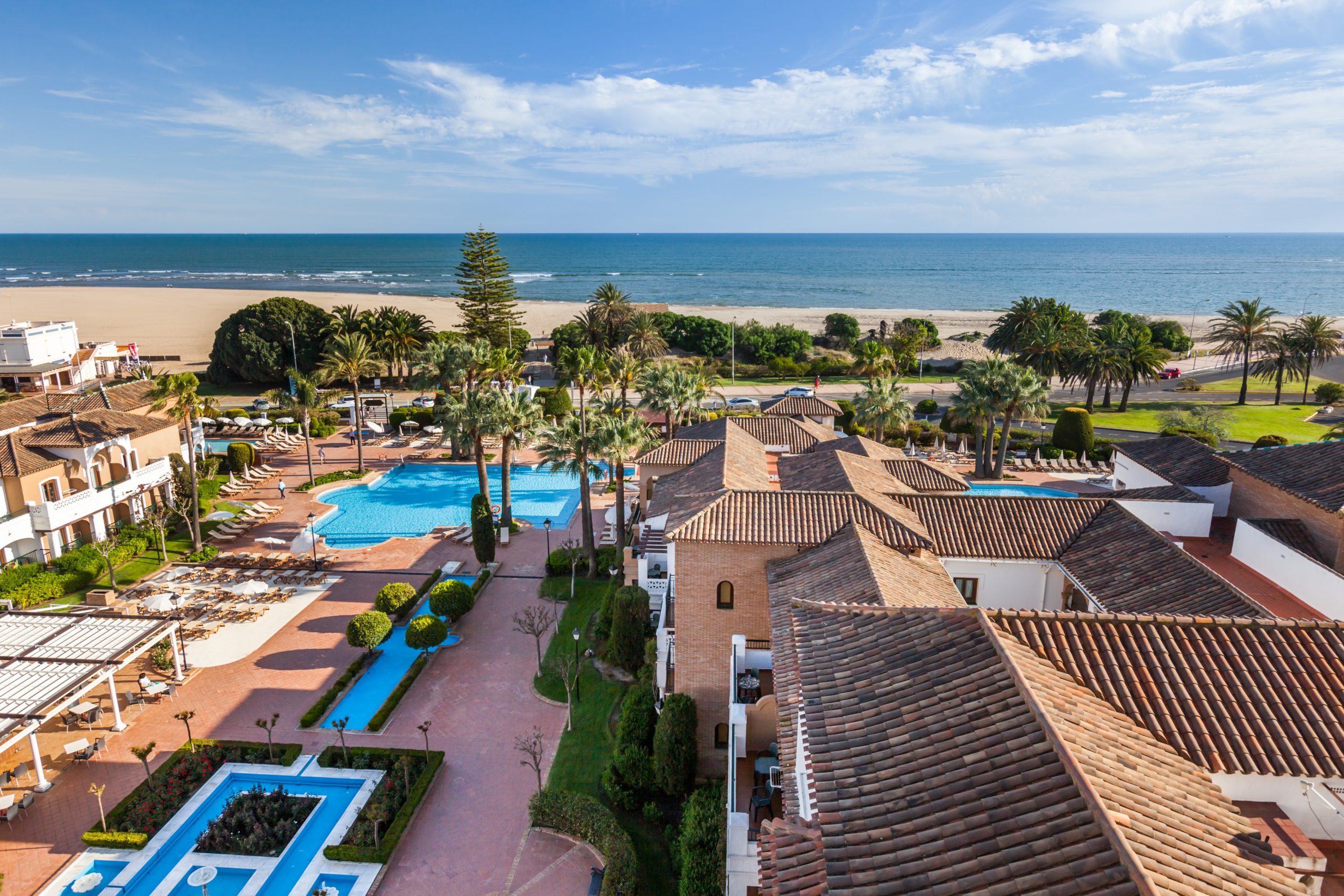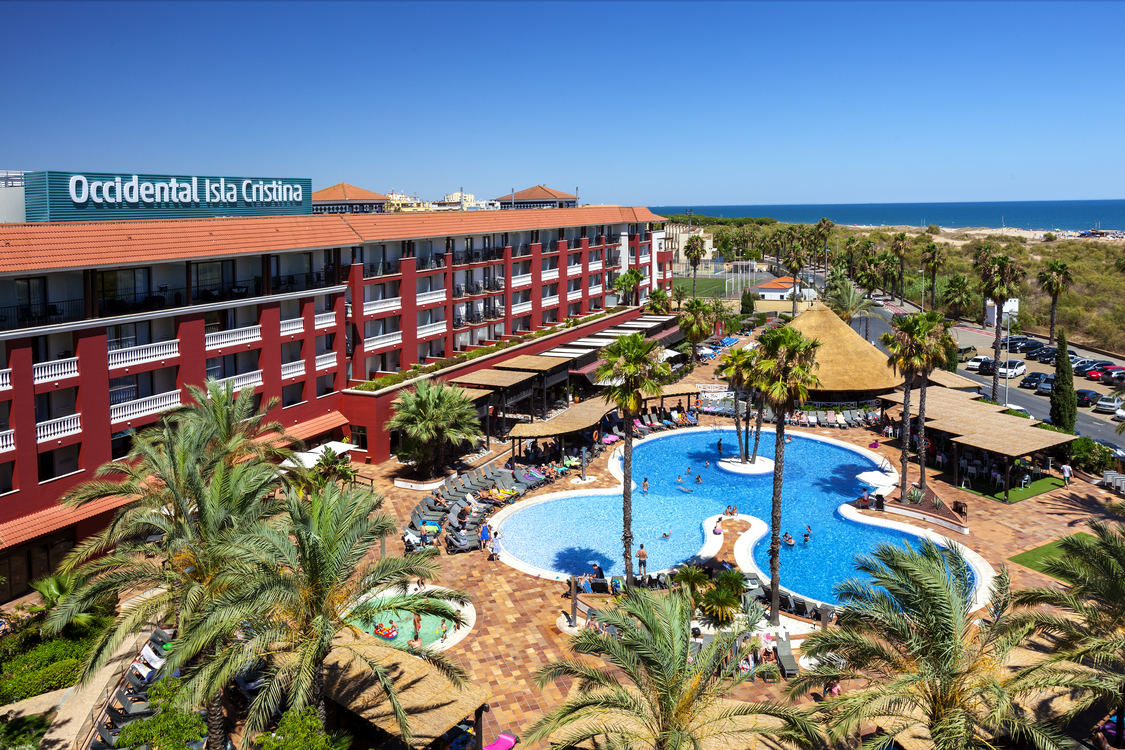The mosque in Almonaster la Real is the last of the rural mosques in Spain and tells the story of the Peninsula’s many invasions and occupations over the millennia. Today, it remains basically unchanged since its construction in the 10th century and that is thanks to the conservation efforts of the local authorities.
The Mudejar portico of the Almonaster La Real mosque can only be reached by climbing to the top of the Sierra de Aracena mountain range and it is easy to understand why this location was chosen for a temple when you see the majestic views from the doorway. In fact, its environs make up what is known today as the Sierra de Aracena y Picos de Aroche Natural Park, the second largest in all Andalusia and well worth a visit.
The Almonaster la Real mosque and its historical context
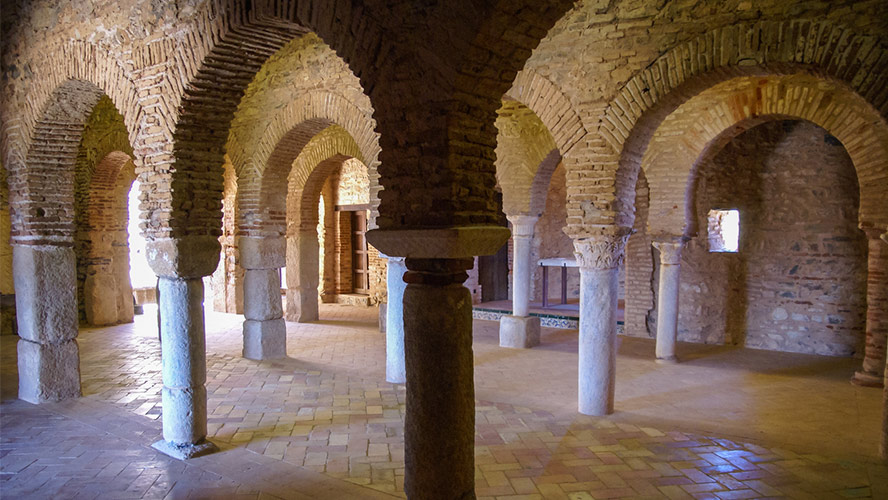
This mosque and its robust lower wall are all that remains of the old Moorish castle that was built here at some point towards the end of the 9th and beginning of the 10th century. This castle was constructed by the Umayyad dynasty, which controlled the greater part of the Iberian Peninsula and was an independent Caliphate based in Cordoba. This incredibly advanced culture and the castle was built as a rustic, austere reminder of their splendour in the rural areas of the Caliphate’s dominion.
This was not the first building on this site, though. Prior to the Moorish invasion of Spain in 711, the mountaintop had already been home to a roman military site from the 1st and 2nd centuries CE, which was later converted into a Visigoth monastery in the 6th century. The Moors incorporated elements from both of these predecessors and even referred to their mosque as the Almunnastyr, or ‘The Monastery’.
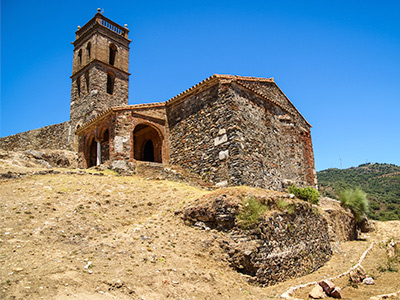
Today, traces of the mosque’s prestigious past can still be seen inside the building in the form of Roman and Visigoth columns, capitals and other architectural elements. Perhaps the jewel in its crown, however, is the Visigoth altar, which still has its original decorations of peacocks in relief.
Multicultural Architecture
Even today you can get a sense of the awe worshippers at the top of this summit have felt when leaving the door of this temple over the millennia. Rolling hills and deep valleys spread out as far as the eye can see, making it the perfect place for both a temple and a fortification.
Its beautiful double arched Neo-Mudéjar doorway was installed by the Christians in the 16th century but it was the Muslim Moors who oriented this side of the building eastwards in the direction of the Kaaba in Mecca. Before the Christians installed the doorway, this was a wall against which the Moors would pray in the direction of Mecca. After the Christians installed the door, worshippers were immediately directed towards the altar, one of the other modifications made by the Christians in the Mudéjar style.
The last Christian modifications were made during the 16th century, with the addition of the porch and bell tower. In
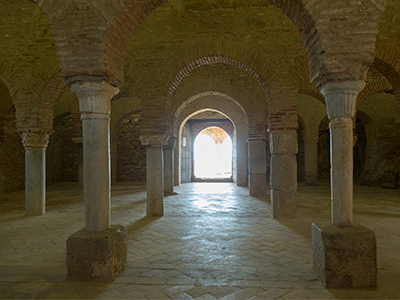
the 18th century, certain superficial additions were added – such as the decoration of the dome above the apse – but the mosque’s pre-Christian roots still define it to this day. The inner space is still divided into a sahn, or ablutions patio, which would have been the first room worshippers came to through the old door, and a liwan, or prayer room with five naves that face the direction of Mecca. The old wall that was replaced with the Neo-Mudéjar door still contains the arched brick nave, with its surrounding alfiz, which was a focal point for worshippers’ prayers during the Caliphate period. Even the bell tower constructed by the Christians still retains its fundamental design as a minaret, which the innovative Moors designed in such a way as to collect rainwater in the still-existent water cistern below.
The Almonaster la Real Mosque is an excellent example of how cultures build and grow one on top of the other, especially in the fertile cultural ground of the Iberian Peninsula.
What else is there to see in Almonaster la Real?

Aside from its iconic mosque, Almonaster la Real has many attractive sights to offer its visitors. After all, it wasn’t listed among the ‘Most Beautiful Towns in Spain’ for nothing:
- San Cristóbal Hill: at the top of San Cristóbal hill there are two overlooks that will give you an impressive view over the entire province. The area is easily accessible by car and there are walking routes from the town centre that allow the average walker to reach the summit in a little under an hour.
- San Martín Church: built during the 14th century, this Gothic-Mudéjar church arose from the need a growing population had for more places of worship. It is certainly worth a visit for its impressive mix Gothic, Mudéjar and even Portuguese manuelino architectural styles.
- Al-Ándalus Interpretation Centre: not far away, in the town of Aracena, you will find this centre dedicated to the memory of one of Spain’s golden ages. The influences of the Moorish culture of Al-Ándalus on the region today are visible wherever you go, and this centre uses modern technology to show visitors the impact the Moors had on Spain over the course of 700 years. The centre also gives advice on routes to take around the province that will demonstrate the enduring legacy of the Moors here.




































































